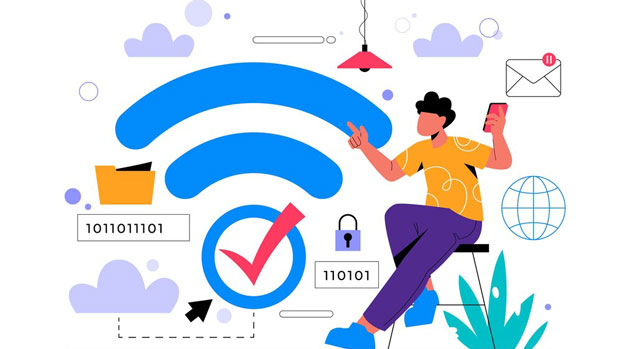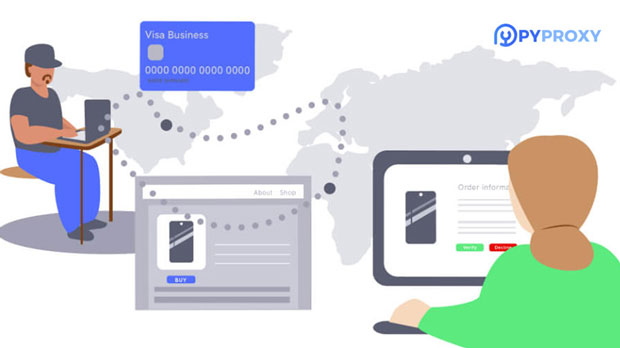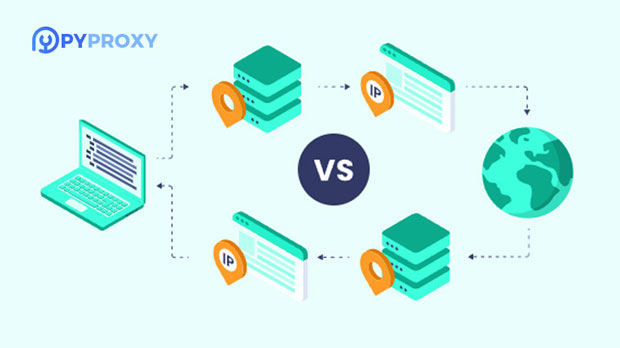In today's dynamic technological landscape, dynamic proxy selection plays a crucial role in optimizing network performance and ensuring enhanced security. Among the myriad of available solutions, PYPROXY and Proxy Croxy stand out for their respective advantages in different use cases. By exploring the benefits and features of both, businesses and developers can make informed decisions on which solution aligns best with their requirements. This article delves into a comprehensive comparison of PyProxy and Proxy Croxy, focusing on performance, flexibility, security, and scalability. The goal is to provide a clear understanding of each solution's strengths, helping users navigate the decision-making process effectively. Understanding Dynamic Proxy SelectionDynamic proxy selection refers to the mechanism where a system automatically selects an appropriate proxy server based on real-time conditions, such as network performance, geographical location, or security requirements. This is particularly crucial in scenarios where static proxy servers may become inefficient or insecure. The dynamic nature ensures optimal performance, better anonymity, and reduced risk of security breaches. As such, it is essential for businesses that require reliable network communication, secure transactions, and scalable infrastructure to consider dynamic proxy solutions.PyProxy OverviewPyProxy is a Python-based proxy solution known for its simplicity, flexibility, and ability to integrate with various systems. This solution allows users to dynamically select proxies based on pre-configured rules, and it supports both HTTP and SOCKS protocols. One of PyProxy's standout features is its seamless integration with Python's extensive libraries, which makes it an ideal choice for Python developers looking to incorporate proxy solutions into their applications.Proxy Croxy OverviewProxy Croxy, on the other hand, is a more sophisticated solution designed to address complex networking needs. Built on a robust infrastructure, it offers a comprehensive set of features, including automated proxy rotation, advanced filtering, and geographical proxy selection. This makes Proxy Croxy particularly useful for large-scale enterprises or applications that require high levels of anonymity, geographical diversification, and scalability. Unlike PyProxy, Proxy Croxy offers a more user-friendly interface with pre-configured options for various use cases.Performance and ScalabilityWhen it comes to performance, both PyProxy and Proxy Croxy offer significant advantages depending on the context. PyProxy is lightweight and ideal for smaller-scale applications that require minimal configuration. Its performance is stable for standard use cases, especially when combined with Python scripts that automate tasks such as proxy rotation and selection.However, when performance at scale is the priority, Proxy Croxy excels. Its advanced proxy rotation mechanisms ensure that requests are always routed through optimal servers, reducing latency and improving overall response time. Additionally, Proxy Croxy can handle a much larger number of concurrent connections, making it more suitable for enterprise-level applications with high traffic demands.Flexibility and CustomizationIn terms of flexibility, PyProxy provides developers with a high degree of customization. Being open-source and built with Python, it offers a wide range of configuration options. Users can modify proxy selection rules, integrate additional protocols, and customize the solution to meet their specific needs. This makes PyProxy a top choice for developers who need full control over the proxy selection process and who are working within a Python-centric environment.On the other hand, Proxy Croxy provides a more streamlined approach with its pre-configured options and a user-friendly interface. While it is not as customizable as PyProxy, it does offer a range of configuration settings that can accommodate most standard use cases. For businesses looking for a more hands-off approach to dynamic proxy management, Proxy Croxy’s user-friendly features and automated functionality are ideal.Security ConsiderationsBoth PyProxy and Proxy Croxy place a strong emphasis on security, though in different ways. PyProxy, being an open-source tool, allows developers to inspect, modify, and enhance the security features according to their specific needs. This flexibility can be an advantage for security-conscious users who wish to implement additional layers of security, such as encryption or custom authentication methods.Proxy Croxy also focuses heavily on security, offering features like IP rotation, geo-location restrictions, and automatic security updates. For users who are primarily concerned with anonymity and protecting their systems from malicious actors, Proxy Croxy’s built-in security mechanisms make it an excellent choice. It provides robust protection against common threats like DDoS attacks and IP blacklisting, which are crucial for maintaining the integrity of online transactions.Ease of UsePyProxy, due to its Python-based nature, requires a certain level of technical expertise to set up and maintain. While it offers flexibility and power, the learning curve can be steep for users who are not familiar with Python programming. However, for developers comfortable with Python, PyProxy is a highly effective tool that can be tailored to a wide variety of scenarios.In contrast, Proxy Croxy is designed with ease of use in mind. Its user interface is intuitive and requires minimal technical knowledge to operate. This makes it particularly appealing to businesses and individuals who need a solution that works out of the box with little configuration. Proxy Croxy’s setup process is straightforward, and the interface provides quick access to all essential settings, making it suitable for users with limited technical experience.Cost-EffectivenessCost is often a deciding factor when choosing between two similar solutions. PyProxy, being open-source, comes with no licensing fees, making it a cost-effective choice for small businesses or developers who are comfortable with managing their own infrastructure. However, the need for manual setup and ongoing maintenance may incur indirect costs in terms of time and effort.Proxy Croxy, on the other hand, is a paid service that offers a more comprehensive solution. While it comes with a subscription cost, the advantages of having a ready-to-use solution, along with technical support and regular updates, may justify the expense for larger businesses or those who require guaranteed uptime and security. Additionally, Proxy Croxy’s automated features can reduce operational costs associated with proxy management.In conclusion, both PyProxy and Proxy Croxy have their unique strengths that cater to different needs. PyProxy is ideal for Python developers who require full customization and control over their proxy selection process. Its flexibility, cost-effectiveness, and integration with Python’s ecosystem make it a powerful tool for small to medium-scale applications.On the other hand, Proxy Croxy is more suited for enterprises or businesses that require a user-friendly, robust, and scalable solution. Its advanced features, automatic proxy rotation, and strong security mechanisms make it an excellent choice for those prioritizing performance, anonymity, and ease of use.The decision between PyProxy and Proxy Croxy ultimately depends on the user’s specific requirements, technical expertise, and scale of operation. By carefully considering these factors, businesses and developers can select the proxy solution that best fits their needs and ensures optimal network performance and security.
Sep 04, 2025



































































